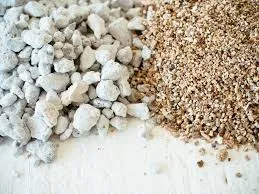Nov . 30, 2024 20:22 Back to list
wall paint materials
Understanding Wall Paint Materials A Comprehensive Guide
When it comes to beautifying our living spaces, wall paint plays a crucial role. The choices available in terms of materials, finishes, and colors can significantly influence not only the aesthetic of a room but also its functionality and durability. This article will delve into the various types of wall paint materials, their characteristics, and their best use cases.
Types of Wall Paint Materials
1. Latex Paint Latex paint, also known as water-based paint, is one of the most popular choices for interior walls. Its primary ingredient is water, making it easy to clean up and low in volatile organic compounds (VOCs), which contributes to better indoor air quality. Latex paints dry quickly, allowing for faster project completion, and they’re available in a variety of finishes—from matte to high gloss. Furthermore, latex paint is known for its flexibility and resistance to cracking. This makes it an excellent choice for areas with fluctuating temperatures and humidity, such as kitchens and bathrooms.
2. Oil-Based Paint Although less common for residential interiors, oil-based paints are still widely used for specific applications. They provide a hard, durable finish that is ideal for high-traffic areas or surfaces subject to wear and tear, such as trim, moldings, and cabinets. The slow drying time of oil-based paint allows for smoother application and better leveling, but it also means longer wait times between coats. One drawback is that oil-based paints have higher levels of VOCs, making them less environmentally friendly and requiring careful ventilation during application.
3. Acrylic Paint Acrylic paints are water-based and are known for their color richness and versatility. They offer excellent adhesion and flexibility and can be used on a variety of surfaces, including wood, metal, and masonry. Acrylic paints dry quickly and clean up easily with soap and water. Additionally, they are resistant to fading, making them suitable for exterior surfaces exposed to sunlight. However, due to their lower durability compared to oil-based paints, they may require more frequent repainting, especially in high-wear areas.
4. Chalk Paint A popular option among DIY enthusiasts, chalk paint provides a matte, vintage appearance. It adheres well to multiple surfaces without extensive prep work and creates a texture that can be easily distressed for a shabby chic look. While chalk paint is sophisticated and aesthetically pleasing, it typically requires a protective topcoat due to its low durability. This makes it ideal for decorative furniture rather than high-traffic wall areas.
5. Textured Paint Textured paint can add depth and interest to a wall, turning a simple surface into a unique focal point. This paint contains additives that give it a raised or three-dimensional look. Popular in contemporary design, textured paint can hide imperfections in walls and is also available in various styles, such as stucco or sand-like finishes. However, it often requires specialized application techniques and may be more challenging to touch up when necessary.
wall paint materials

Choosing the Right Paint Material
When selecting a wall paint material, the intended use of the space is vital. For example, high-moisture areas like bathrooms and kitchens may benefit from latex paint due to its moisture resistance and ease of cleaning. In contrast, areas prone to wear and tear, such as hallways, may require the durability of oil-based paint.
Additionally, one should consider the desired finish. Matte finishes can hide imperfections but are not as durable, while semi-gloss and gloss finishes reflect light and are easier to clean, making them suitable for trimming and doors.
Environmental Considerations
In recent years, there has been a growing trend towards eco-friendly paint materials. Many manufacturers now produce low-VOC or VOC-free paints that aim to minimize environmental impact and health risks. These paints not only provide a safer indoor environment but also contribute to sustainability by using recycled materials and biodegradable components.
Conclusion
Wall paint materials significantly influence the ambiance and durability of our spaces. By understanding the different types available and their respective characteristics, homeowners and designers can make informed decisions that enhance their living environments while meeting practical needs. Whether it’s a vibrant acrylic in a child’s room, a textured finish for added interest, or eco-friendly latex paint for a more sustainable choice, the right wall paint material can transform any space into a beautiful and functional area.
-
Fe-C Composite Pellets for BOF: Enhance Steelmaking Efficiency
NewsAug.07,2025
-
Eco-Friendly Granule Covering Agent | Dust & Caking Control
NewsAug.06,2025
-
Fe-C Composite Pellets for BOF: High-Efficiency & Cost-Saving
NewsAug.05,2025
-
Premium Tundish Covering Agents Exporters | High Purity
NewsAug.04,2025
-
Fe-C Composite Pellets for BOF | Efficient & Economical
NewsAug.03,2025
-
Top Tundish Covering Agent Exporters | Premium Quality Solutions
NewsAug.02,2025
